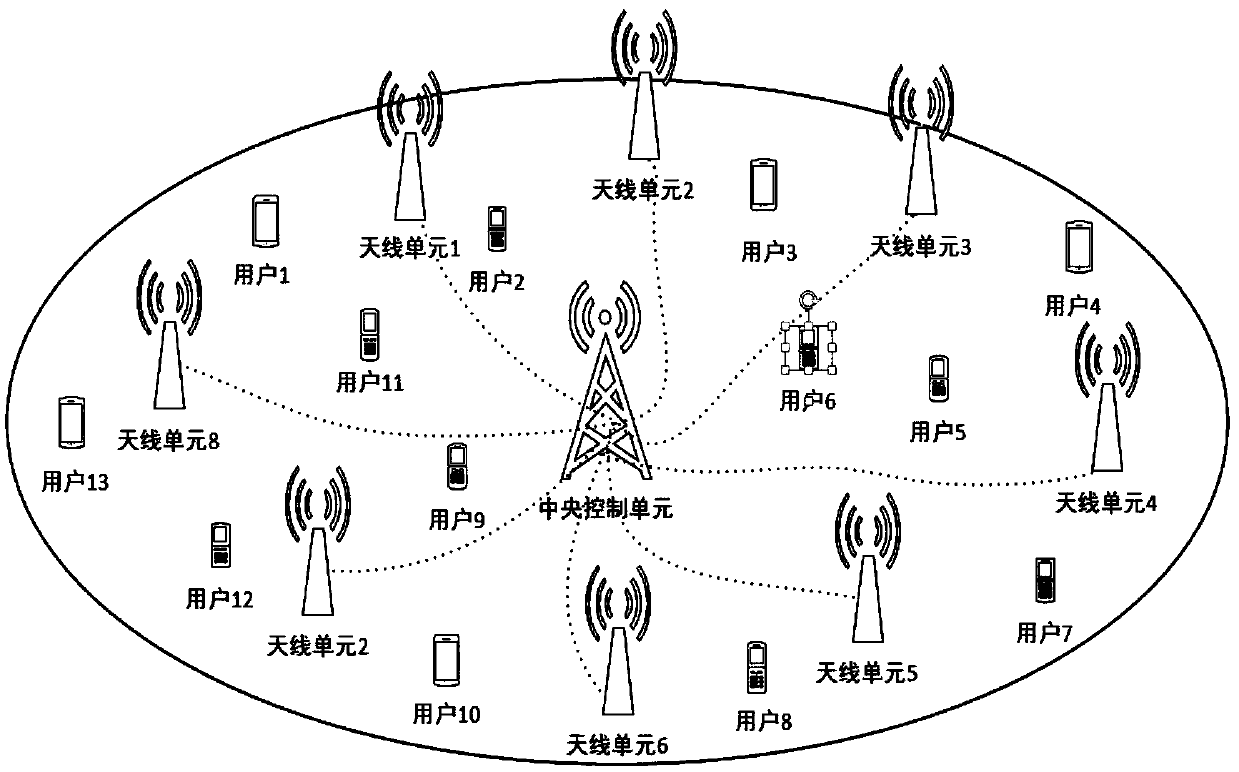Pilot frequency scheduling method based on cross contamination in distributed MIMO system
A pilot scheduling and distributed technology, applied in the transmission system, pilot signal distribution, digital transmission system, etc., can solve the problems of increased algorithm complexity, large channel estimation, low complexity, etc., to reduce computational complexity, Improve system performance and ensure the effect of system performance
- Summary
- Abstract
- Description
- Claims
- Application Information
AI Technical Summary
Problems solved by technology
Method used
Image
Examples
Embodiment Construction
[0028] Below in conjunction with accompanying drawing and specific example, further illustrate the present invention, should be understood that this example is only used to illustrate the present invention and is not intended to limit the scope of the present invention, after having read the present invention, those skilled in the art will understand various equivalents of the present invention Modifications in form all fall within the scope defined by the appended claims of this application.
[0029] Firstly, the following explanation is made: In a distributed MIMO system, it is assumed that there are M antenna units equipped with N antennas and K single-antenna users. The number of antennas of the user in the method of the present invention is not limited, the kth antenna in the method of the present invention can be expressed as the kth user in this example, and the user antenna set in the method of the present invention can be expressed as a user set in this example , so ...
PUM
 Login to view more
Login to view more Abstract
Description
Claims
Application Information
 Login to view more
Login to view more - R&D Engineer
- R&D Manager
- IP Professional
- Industry Leading Data Capabilities
- Powerful AI technology
- Patent DNA Extraction
Browse by: Latest US Patents, China's latest patents, Technical Efficacy Thesaurus, Application Domain, Technology Topic.
© 2024 PatSnap. All rights reserved.Legal|Privacy policy|Modern Slavery Act Transparency Statement|Sitemap



